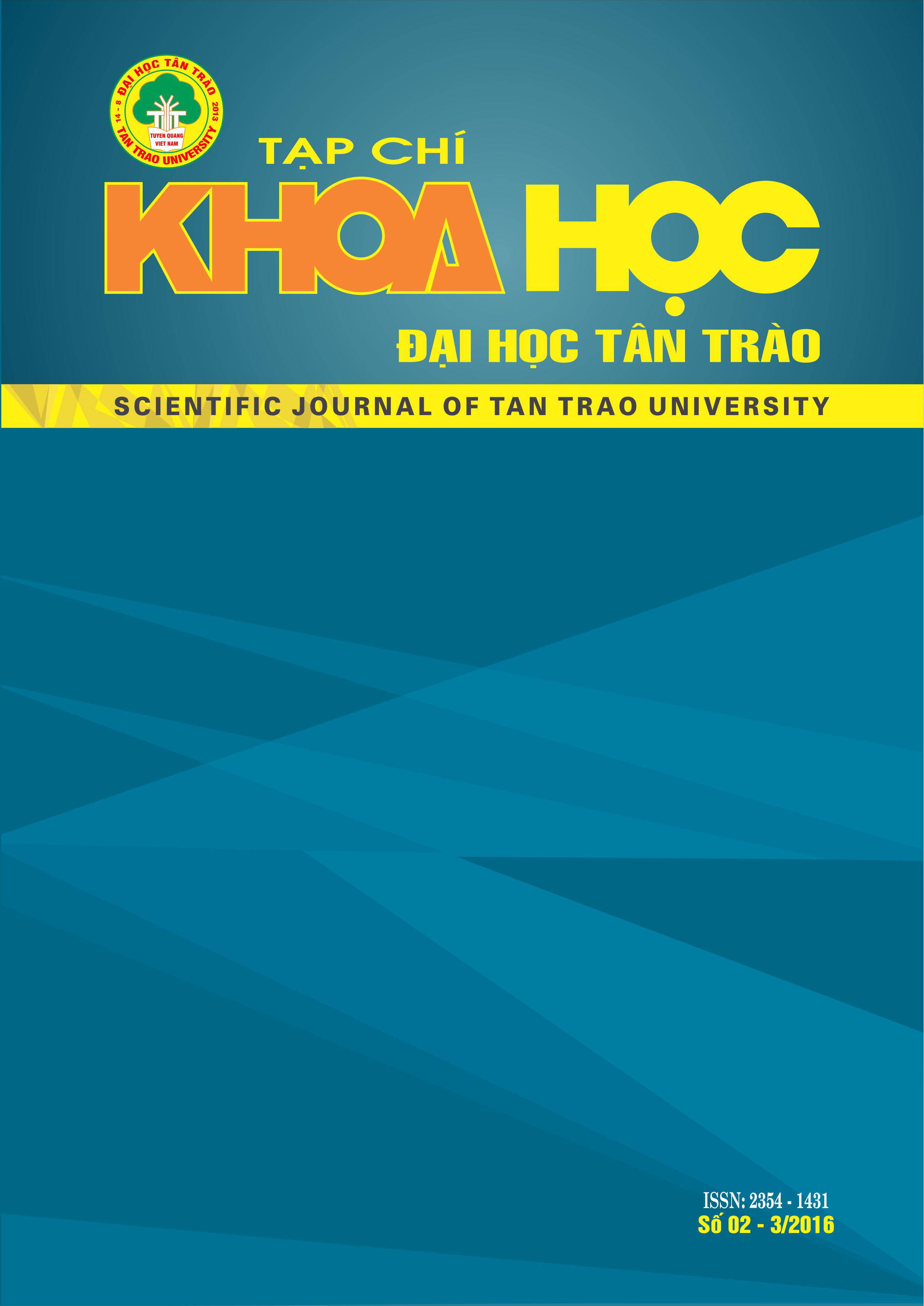ẢNH HƯỞNG CỦA TÍNH CHẤT ĐỒ THỊ LÊN RÀNG BUỘC GIỮA CÁC BẤT BIẾN TRONG CÂY VÀ ĐỒ THỊ PHẲNG
DOI:
https://doi.org/10.51453/2354-1431/2016/92Từ khóa:
đồ thị; cây; đồ thị phẳng; cạnh; đỉnh.Tóm tắt
Lý thuyết đồ thị là một ngành Toán học có nhiều ứng dụng quan trọng trong Tin học và trong thực tế. Những ý tưởng cơ bản được đề ra bởi nhà toán học Thuỵ sĩ Leonhar Euler (1707-1783). Ông đã dùng đồ thị để giải quyết bài toán nổi tiếng về 7 chiếc cầu ở Konigsberg. Bằng mô hình đồ thị, chúng ta có thể giải quyết được nhiều bài toán thực tế như: tìm cách để tham quan một triển lãm sao cho mỗi một hành lang đi qua đúng một lần, tìm số mầu ít nhất để tô mầu bản đồ, biểu diễn sự ảnh hưởng lẫn nhau giữa các cá nhân trong một tổ chức hay sự cạnh tranh giữa các loài trong môi trường tự nhiên... Giữa tính chất của đồ thị và các bất biến trong đồ thị có mối liên hệ ràng buộc chặt chẽ với nhau. Bài báo này chỉ trình bày một số kết quả về ảnh hưởng của tính chất của đồ thị lên ràng buộc giữa các bất biến trong cây và đồ thị phẳng.
Tải xuống
Tài liệu tham khảo
1. B. Bollobas, textit{Graph Theory an Introductory Course}, New York - Heidelberg - Berlin, 1979;
2. R. J. McElice, R.B. Ash, C. Ash, Introduction to Discrete Mathematics, McGraw - Hall Book Company, 1989;
3. K. H. Rosen, Dicrete Mathematics and Its Application, 2, McGraw - Hill Book Company, 1991;
4. R. Wilson, Introduction to Graph Theory, Longman,1975.
5. B. Bollobas et all (Editors), Proceeding of Symposia in Applied Mathematics, 14, Probability Combinators and Its Applications, American Mathematical Society, 1991;
6. O. Ore, Theory of Graphs, American Mathemetican Society, Province, XXXVIII, 1962.
Tải xuống
Đã Xuất bản
Cách trích dẫn
Số
Chuyên mục
Giấy phép

Tác phẩm này được cấp phép theo Giấy phép Quốc tế Creative Commons Attribution-ShareAlike 4.0 .
Bài báo được xuất bản ở Tạp chí Khoa học Đại học Tân Trào được cấp phép theo giấy phép Ghi công - Chia sẻ tương tự 4.0 Quốc tế (CC BY-SA). Theo đó, các tác giả khác có thể sao chép, chuyển đổi hay phân phối lại các bài báo này với mục đích hợp pháp trên mọi phương tiện, với điều kiện họ trích dẫn tác giả, Tạp chí Khoa học Đại học Tân Trào và đường link đến bản quyền; nêu rõ các thay đổi đã thực hiện và các nghiên cứu đăng lại được tiến hành theo cùng một bản quyền.
Bản quyền bài báo thuộc về các tác giả, không hạn chế số lượng. Tạp chí Khoa học Tân Trào được cấp giấy phép không độc quyền để xuất bản bài báo với tư cách nhà xuất bản nguồn, kèm theo quyền thương mại để in các bài báo cung cấp cho các thư viện và cá nhân.
Mặc dù các điều khoản của giấy phép CC BY-SA không dành cho các tác giả (với tư cách là người giữ bản quyền của bài báo, họ không bị hạn chế về quyền hạn), khi gửi bài tới Tạp chí Khoa học Đại học Tân Trào, tác giả cần đáp ứng quyền của độc giả, và cần cấp quyền cho bên thứ 3 sử dụng bài báo của họ trong phạm vi của giấy phép.






